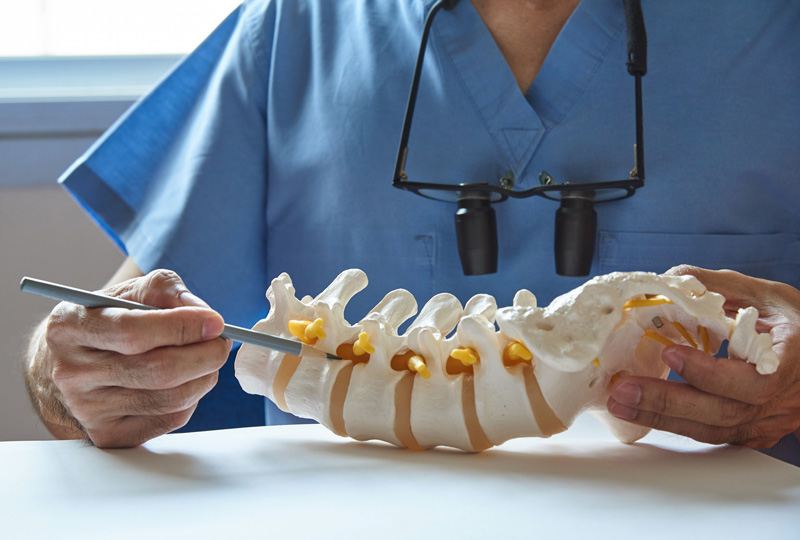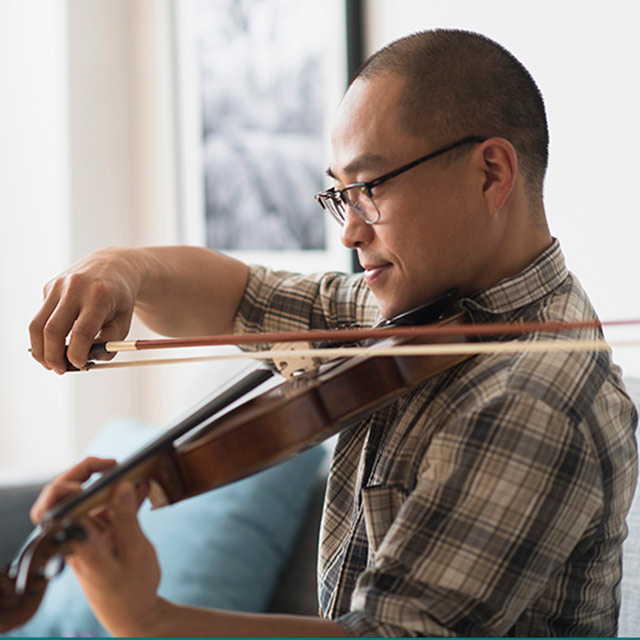Have you recently been diagnosed with lumbar degenerative disc disease? You’re definitely not alone. Here’s everything you need to know about this common condition.
A diagnosis of lumbar degenerative disc disease can sound alarming. But the condition is common and a normal part of an aging body. You may even receive the diagnosis based on imaging when you aren’t experiencing back pain. Or you may have back pain that’s unrelated to this natural aging process of the spine.
We asked Aaron Yang, M.D., of Vanderbilt’s Spine Center, to explain more about the diagnosis. “It’s something that affects every single person,” he said. “So I don’t like to call it a disease. And degeneration also sounds like a horrible term. I think when patients hear that they get really scared.” Instead, Yang said he prefers calling the condition “maturing of the spine” or even “gray hairs of the spine.”
A look at the prevalence
To illustrate how common lumbar degenerative disc disease is, Yang described a review published in the American Journal of Neuroradiology, where researchers reviewed spine image findings in people who were not experiencing back pain. They looked at the prevalence of degenerative disc disease based on age.
“By the age of 20, 37 percent of people show disc degeneration on imaging,” Yang said. And the prevalence increases with each decade. “By the age of 50, we’re talking 80 percent of people have this degeneration on imaging,” Yang added. That number increases to 96 percent for octogenarians.
Does a diagnosis require treatment?
As the research shows, many people will receive a diagnosis of lumbar degenerative disc disease when they do not have back pain, Yang said. Or, if they do have pain, the discomfort may be a result of another issue.
For example, if you tweaked your back while raking leaves, you might eventually undergo imaging of your spine. Your health care provider may tell you that you have lumbar degenerative disc disease because it is something they see on imaging. But in that instance, the natural aging of the spine may not necessarily be the cause of the acute back pain you’re experiencing. The good news is that the majority of acute back pain episodes will go away on their own.
“I think that’s where patients often get sort of misled,” Yang said. “They’re told that they have degenerative disc disease, and they feel like they need to get all these expensive treatments. In reality, it’s just part of the aging process.”
If you do have acute or chronic back pain, seeing a spine specialist can help you pinpoint the cause, Yang added. And a specialist can work with you to find ways to alleviate your pain.
Risk factors
The biggest risk factor for degenerative disc disease is simply aging. “I’m trying to get the message out there to people that it’s extremely common to have this,” Yang said. But certain factors could cause the spine to age earlier. Those include occupation, weight and even genetics.
Keeping the spine healthy
“I try to encourage people that motion is lotion. I want them to stay active as much as possible and maintain flexibility.”
Degenerative disc disease is irreversible, a term Yang said can also sound frightening. “We can’t necessarily reverse what we see on imaging or X-rays,” Yang said. “But that alone should not make you worry or change your activity levels.”
Instead, movement is a key factor in keeping the spine healthy. “I try to encourage people that motion is lotion,” Yang explained. “I want them to stay active as much as possible and maintain flexibility. I think, in the long run, that will help them the most.”

The Vanderbilt Spine Center treats patients from across the Southeast for back pain, sciatica, whiplash and other conditions of the spine, offering a full range of treatments including non-surgical options. If surgery is necessary, the Vanderbilt Spine Center team provides an extraordinary level of experience and expertise for each patient’s needs. For more information, click here or call 615-875-5100.




